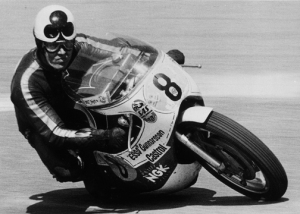When we began looking at helmets, we immediately gravitated towards British manufacturer Davida, as they’re the only company building helmets in the style, and at a level of quality, which matches our own. We’re pleased to now offer their complete line of Classic, Classic Racing Series, and Classic Jet helmet models.
The Classic and Classic Racing Series models are handmade, finely crafted works of art. Designed in the style of the low-dome racing helmet of the 1950s, these helmets feature a cork, canvas and leather interior, a soft leather neck curtain with snap-back side flaps, a goggles retainer, and of course, a wide range of spectacular paint jobs.
The Classic Jet models are also handmade, finely crafted works of art, but made for the modern rider. Fully DOT compliant, these helmets feature a silk and quilted leather liner, goggles retainer, and again, a wide range of spectacular paint jobs.
These helmets are made one at a time, and while it takes a few short weeks to get one, they’re well worth it. And, while they’re pricier than average, they’re a great value, as there are many more expensive helmets out there. Besides, these are such high quality, you really do get what you pay for.
We have examples of each model in each size in our shop, so please drop by to inspect one of these fine helmets yourself.
[fb-like]























![[#Beginning of Shooting Data Section] Nikon D70 2007/05/02 02:55:09.9 RAW (12-bit) Lossless Image Size: Large (3008 x 2000) Lens: 18-70mm F/3.5-4.5 G Focal Length: 55mm Exposure Mode: Manual Metering Mode: Multi-Pattern 1/100 sec - F/16 Exposure Comp.: +3.0 EV Sensitivity: ISO 200 Optimize Image: Custom White Balance: Direct sunlight AF Mode: Manual Flash Sync Mode: Not Attached Color Mode: Mode II (Adobe RGB) Tone Comp: Auto Hue Adjustment: 0¡ Saturation: Enhanced Sharpening: Auto Image Comment: Noise Reduction: OFF [#End of Shooting Data Section] [#Beginning of Shooting Data Section] Nikon D70 2007/05/02 02:55:09.9 RAW (12-bit) Lossless Image Size: Large (3008 x 2000) Lens: 18-70mm F/3.5-4.5 G Focal Length: 55mm Exposure Mode: Manual Metering Mode: Multi-Pattern 1/100 sec - F/16 Exposure Comp.: +3.0 EV Sensitivity: ISO 200 Optimize Image: Custom White Balance: Direct sunlight AF Mode: Manual Flash Sync Mode: Not Attached Color Mode: Mode II (Adobe RGB) Tone Comp: Auto Hue Adjustment: 0¡ Saturation: Enhanced Sharpening: Auto Image Comment: Noise Reduction: OFF [#End of Shooting Data Section]](https://hutchinsoncycle.com/wp-content/gallery/davida/thumbs/thumbs_60530web.jpg)

















